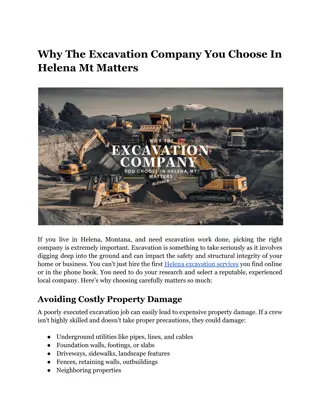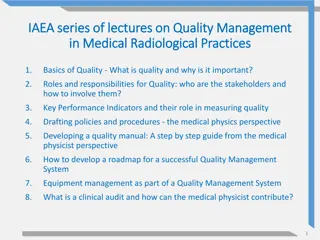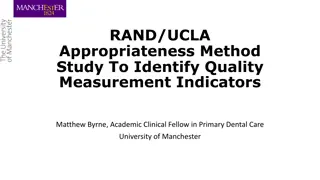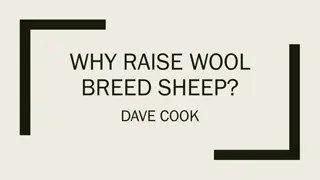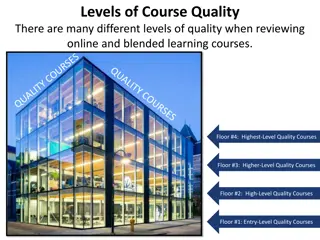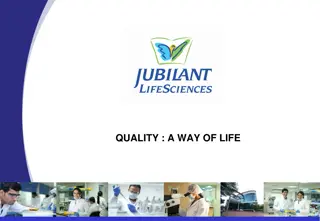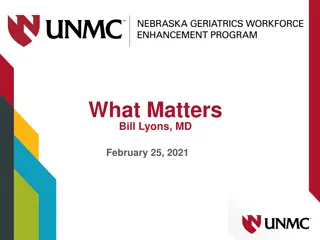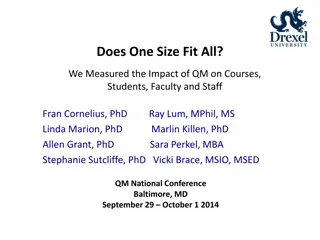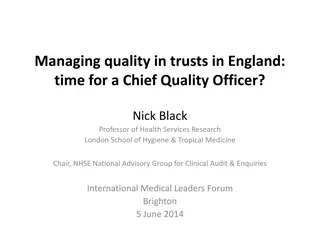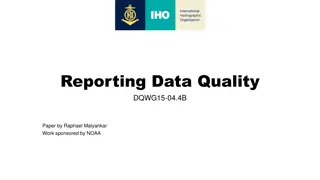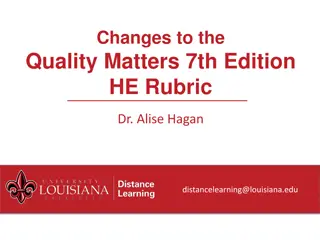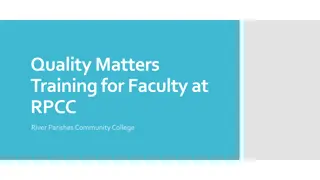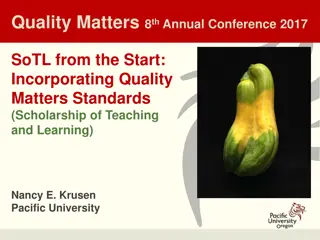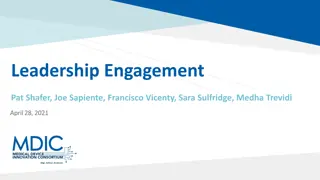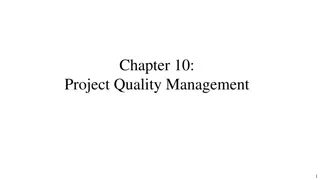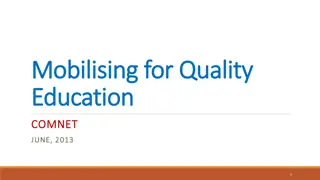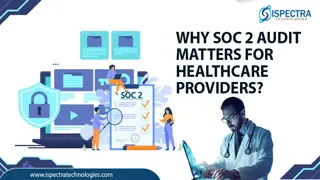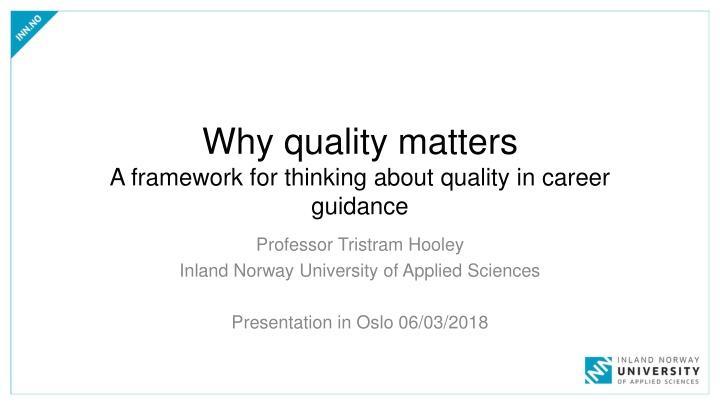
Quality in Career Guidance: A Framework by Professor Tristram Hooley
Explore the significance of quality in career guidance through Professor Tristram Hooley's framework, delving into domains of quality, different approaches, and driving factors for change in the field. Learn about regulatory, advisory, and organic features shaping quality assurance practices.
Download Presentation

Please find below an Image/Link to download the presentation.
The content on the website is provided AS IS for your information and personal use only. It may not be sold, licensed, or shared on other websites without obtaining consent from the author. If you encounter any issues during the download, it is possible that the publisher has removed the file from their server.
You are allowed to download the files provided on this website for personal or commercial use, subject to the condition that they are used lawfully. All files are the property of their respective owners.
The content on the website is provided AS IS for your information and personal use only. It may not be sold, licensed, or shared on other websites without obtaining consent from the author.
E N D
Presentation Transcript
Why quality matters A framework for thinking about quality in career guidance Professor Tristram Hooley Inland Norway University of Applied Sciences Presentation in Oslo 06/03/2018
A vision of practice Theory Evidence Actual practice Policy Quality Image of an ornate carved stone bridge, Yellow Mountains, China, spanning a narrow gap between two vertical rock faces used under creative commons from http://photoeverywhere.co.uk/east/china/slides/natural_wonders_china01815.htm
What can be quality assured? Domains of quality Policy Organisations Process People Output or outcome Consumption
Different approaches to quality Quality in a product or service is not what the supplier puts in. It is what the customer gets out and is willing to pay for. Peter Drucker The International Organization for Standardisation (ISO) quality standard focuses on the process and the organisation that runs the process. Six Sigma focus on the output and the minimisation of errors.
Change driver Local Systemic Advisory Regulatory Low Degree of provider professional autonomy Organic Competitive High
Regulatory (typical features) Legal requirements and formal standards Inspection regimes Practitioner registration (incorporating qualification requirements) Regulations about facilities Regulations around outputs (for example, a requirement that a school or career guidance facility must provide a certain number of individual counselling sessions per year).
Advisory (typical features) Models, benchmarks and exemplars of good practice Provision of support for providers and professionals Driven by moral rather than legal pressure
Organic (typical features) Quality is defined by the provider and the professional. Driven by professional values and the desire to do a good job. Mechanisms include quality circles, supervisory arrangements, peer observation and mentoring, professional networks and local self-evaluation. Involvement of users as co-producers.
Competitive (typical features) Quality driven by customer responses to information on outcomes Consumer feedback League tables Outcome focused Payment by results
Critical perspectives on quality If quality is defined at least in part as fitness for purpose, then it must be asked, Whose purpose or purposes? Limited evidence base of on efficacy Distortion and perverse incentives Is it possible to quality assure something with the complexity of career guidance
Good career guidance Summarises existing evidence and frames them as eight benchmarks. Presents it in a way that can be understood by policy makers and acted on by school leaders. Has achieved wide support amongst policy actors and practitioners alike.
The Gatsby Benchmarks 1. A stable careers programme 2. Learning from career and labour market information 3. Addressing the needs of each pupil 4. Linking curriculum learning and careers 5. Encounters with employers and employees 6. Experiences of workplaces 7. Encounters with further and higher education 8. Personal guidance
The quality approach in English schools Regulatory Organic Regulatory Advisory Competitive Regulatory Advisory Advisory Professional standards & register of practice Gatsby Benchmarks Supported by Compass Quality in Careers Standard Statutory guidance Destinations data CDI Careers leadership Local co- ordination curriculum Process People Organisations People Process Outcome Organisations Process
References Department for Education. (2017). Careers Strategy: Making the Most of Everyone s Skills and Talents. London: Department for Education. Drucker, P. (2015). Innovation and entrepreneurship. Abingdon, Oxfordshire: Routledge. Gatsby Charitable Foundation. (2014). Good Career Guidance. London: Gatsby Charitable Foundation. Hooley, T. and Rice, S. (Forthcoming). Ensuring quality in career guidance: A critical review. British Journal of Guidance and Counselling. The Careers & Enterprise Company. (2017). State of the Nation 2017. London: The Careers & Enterprise Company.
In conclusion Quality is a contestable concept. It can mean different things to different people. Quality is complex. It can operate at many levels and in many different ways. There are also a number of dangers to watch out when you implement quality assurance approaches. The best solutions might require the interweaving of different approaches to quality (although there is also some value in simplicity).
Tristram Hooley Director of Research, The Careers & Enterprise Company /Professor of Career Education, University of Derby / Professor II, Inland Norway University of Applied Sciences Email: thooley@careersandenterprise.co.uk Twitter: @pigironjoe Blog: http://adventuresincareerdevelopment.wordpress.com

